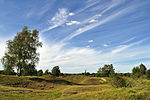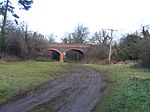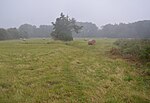Walcot Hall
Buildings and structures in PeterboroughCountry houses in CambridgeshireCountry houses in NorthamptonshireGrade I listed buildings in CambridgeshireGrade I listed buildings in Northamptonshire ... and 1 more
Use British English from February 2023

Walcot Hall is a Grade I listed Carolean country house in the hamlet of Southorpe. It lies 2 km (1 mile) south of the village of Barnack, Cambridgeshire, UK. The house is now within the boundary of the Peterborough unitary authority area of the ceremonial county of Cambridgeshire but it was part of the Soke of Peterborough, an historic area that was traditionally associated with Northamptonshire. It is constructed of limestone ashlar in 2 storeys with attic with a rectangular floor plan of 9 by 5 bays and a Collyweston stone roof. It stands in some 120 acres of wooded parkland as part of a 1400-acre agricultural estate.
Excerpt from the Wikipedia article Walcot Hall (License: CC BY-SA 3.0, Authors, Images).Walcot Hall
Walcot Road,
Geographical coordinates (GPS) Address Nearby Places Show on map
Geographical coordinates (GPS)
| Latitude | Longitude |
|---|---|
| N 52.6245 ° | E -0.4074 ° |
Address
Walcot Road
PE9 3EJ
England, United Kingdom
Open on Google Maps










